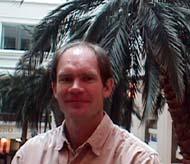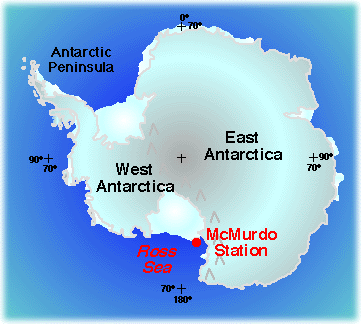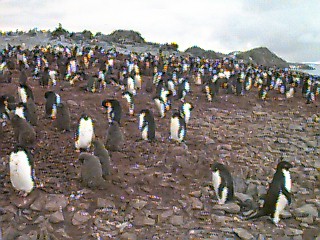





Hi, my name is Andre Wille. For as long as I can remember, I have been
fascinated with the mysterious continent of Antarctica. I also have a
passion for birds. When I learned that I would have the opportunity to
study penguins in Antarctica, I was pretty excited. My interest in birds
(as well as natural science in general) has taken me to many places around
the world. I have worked in such locations as the California coast and the
upper Amazon. In California I worked with the Peregrine Fund returning
peregrine falcons to the wild. On the head waters of the Amazon I worked in
a place called Manu, learning about the reproductive biology of
parrots. These experiences and others have had a very powerful effect on my
life. Ten years ago I decided to become a high school teacher so that I
could share my love of biology as well as my concern for the world's
vanishing wild places. Since that time, I have worked at Basalt High School
teaching biology, chemistry, and physical science.
In addition to my interest in the sciences, I am very active in wilderness
pursuits such as rock and ice climbing, high altitude mountaineering, back
country skiing and white water kayaking. With my wife and two daughters
(ages 2 and 6), I also enjoy hiking, skiing, and rafting. Living in the
mountains of Colorado, these activities are all just out the back door. At
my school, I sponsor an outdoor club to expose my students to the wild
playground and outdoor classroom that surrounds us. I find that when my
students experience nature first-hand, they really appreciate what we learn
in the classroom.

Factors Regulating Population Size and Colony
Distribution of Adelie Penguins
Dr. David G. Ainley, H.T. Harvey & Associates
In Antarctica, I will parcticipate in research on Adelie
penguins with Dr. David Ainley of H.T. Harvey and Associates. Dr. Ainley is
interested in identifying the factors which regulate population size and
colony distribution of Adelie penguins. Some of the factors we will be
investigating include: the availability of nesting habitat and food,
competition with other species of penguins, and the effects of climate
change which has resulted in recent changes in pack ice in the Ross
Sea.
To analyze these factors, we will utilize a number of recent technological
advances. The pack ice distribution which is critical to food availability
is monitored by satellite photographs. Aerial photos are used to evaluate
the availability of nesting habitat. Radio telemetry is used to track
penguins to their feeding areas. Finally, a new system using an automated
electronic balance with computerized data collection, will be used to
record body mass before and after feeding trips. These trips involve long
swimming distances and can take 24 hours or longer. Information obtained
in this study will help answer the basic questions; why do neighboring
penguin colonies differ in size and why are new colonies
founded?
Polar Classroom Activities
Penguin
Preferences - Tracking Adelie Penguins with Radio Telemetry
Making Penguins with a Two Liter Bottle
Chillin' Out with Freezing Point Depression: The Science of Making Ice Cream

The Ross Sea region in which Andre will be conducting research.

Adelie penguin rookery. Photograph courtesy of Besse Dawson, Pearland High School (TEA
1997/1998).

